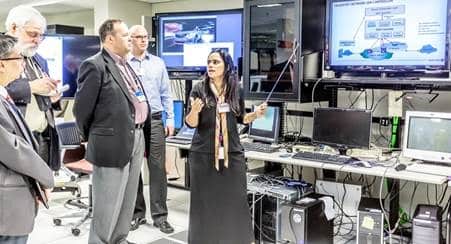Bell Labs, the industrial research arm of Alcatel-Lucent, via its research - IntelliSpektrum - finds that today’s ultra-broadband mobile networks can make significant energy savings and performance gains by deploying a mix of macro and small cell radio base stations. The project that is funded through the German Federal Ministry of Economic Affairs and Energy, sees Bell Labs collaborating with the Fraunhofer Institute for Applied Solid State Physics, the Fraunhofer Heinrich-Hertz-Institute and Intel Mobile Communications GmbH.
The project aimed to demonstrate how, even as mobile data traffic rises, and the number of devices connecting to a network increases, base stations can be dynamically adapted to better manage traffic loads and save energy without any adverse affects to end-user service quality. According to Bell Labs, significant energy savings are possible in ‘heterogeneous’ (HetNet) mobile networks that comprise a mix of radio base stations, including Macro, Metro, Pico and Femto. Bell labs claims that energy savings of more than 50% were seen in mobile networks with a high number of small cells compared to those comprised only of macro base stations.
Marcus Weldon, President of Bell Labs & CTO Alcatel-Lucent
The IntelliSpektrum research project is a perfect example of how Alcatel-Lucent and Bell Labs are collaborating with other industry leaders to innovate. We are committed to research and development of energy-efficient products and technologies that offer improved network performance. Findings from the project underscore the critical importance of small cells and prove that that by deploying a mix of base station radios operators will see better energy efficiency and increased network performance – thereby improving their customers’ experience and increasing efficiency.
Dr. Thomas Haustein, Head Wireless Networks at the Fraunhofer Heinrich-Hertz-Institute
Our scientific discoveries help us deliver game-changing communications solutions. This research allowed us to show the possibilities of HetNets in terms of optimizing signal processing and wireless networks overall.




















